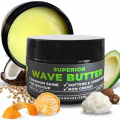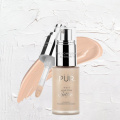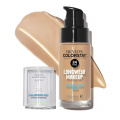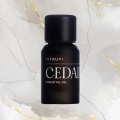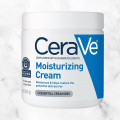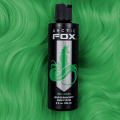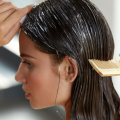An Expert’s Guide on How to Use Tea Tree Oil for Skin Tags
Bumpy skin is frustrating. Skin tags indicate many things about your health. Unlock the benefits of tea tree oil for skin tags and enjoy smooth and clear skin.

50 % to 60% of the world's population develops pesky skin tags once in their lifetime (1). Skin tags are usually harmless and may disappear without any active intervention on your end. However, a bunch of such visible bumps on the skin can look ugly and bother you! Modern skincare swears by the amazing skin benefits of tea-tree oil (2),(3). Although there is no scientific study that directly links the effects of tea tree oil for skin tags, there are research papers that discuss the properties of tea tree oil as a cure for many skin swellings, inflammations, and infections (2). Over the years, skin specialists have provided anecdotal evidence about how to remove skin tags using our age-old tea tree oil. Read on to learn about tea tree oil usage as a remedy for skin tags.
What are Skin Tags?
Skin tags are tiny, non-cancerous skin growths that can develop on different body parts. In the words of our contributor Dr. Yelena Deshko, “Skin tags are very common and occur in approximately 50% of adults. They usually grow in the folds of the skin, where skin rubs together such as: underarms, groin, eyelids, neck or under the breasts.”
They often look like little, dangling skin flaps and are typically soft and flesh-colored. The size of skin tags normally ranges from a few millimeters to a few centimeters. They are frequently seen on the neck, under the breasts, in the groin, on the eyelids, and in the armpits. They are scientifically known as “acrochordons.” Skin tags are often not harmful, but their appearance can be an issue for some people (1).
Causes of Skin Tags
Skin tags usually develop in middle-aged or older adults past 40 years of age. The exact cause of skin tags is not fully understood, but several factors may contribute to their development.
Skin tags are formed when blood vessels and collagen clumps become trapped inside the thicker areas of the skin with age. As they commonly form in folds and wrinkles, friction between the skin may be a potential reason for skin tags. The skin rubs against itself or the clothing in body parts like the neck, underarms, and the groin area to develop skin tags (4).
Who can have Skin Tags?
Certain families are predisposed to developing skin tags. However, skin tags can appear on anyone, irrespective of gender.
Skin tags are most common in people associated with the following conditions:
- Obesity
People who are overweight or obese are more likely to develop skin tags due to multiple stretched skin folds.
- Pregnancy
Hormonal changes during pregnancy can make skin tags more likely to appear.
- Certain medical problems
Diabetics with insulin resistance may be more prone to developing skin tags (5). Skin tags have been associated with high blood pressure, excessive cholesterol, a raised inflammatory marker called C-reactive protein, atherosclerosis, and cardiovascular diseases. Furthermore, research has linked skin tags and polycystic ovarian syndrome (PCOS) (1).
How Do You Know if You Have Skin Tags?
Most people who have skin tags never feel any pain. If there is a large lesion where the skin is continually rubbing against itself, it might itch and hurt.
Typically, skin tags occur in the skin folds of the eyelid, the breasts, the armpits, the neck, and the crotch. They can be the same color as your complexion or maybe pigmented. They either look like a flaccid skin flap or like a mushroom with a tiny attachment or a stalk. The stalks are as minute as 2 millimeters, but they can get twisted or pulled to cause pain and discomfort (1). Discussing skin tags, our contributor Dr. Yelena Deshko says, “One can expect the skin tags to drop off naturally. In fact, in certain instances skin tags can disappear by themselves such as after pregnancy.”
Diagnosis for Skin Tags
A dermatologist can diagnose skin tags during a regular physical exam. A visual examination is frequently sufficient for the diagnosis of skin tags due to their distinctive appearance.
The physician may want to check your blood sugar and cholesterol levels to correlate with the appearance of the skin tag. In some cases, a biopsy may be performed to rule out any underlying skin issues (4).
Does Tea Tree Oil Work For Removing Skin Tags?
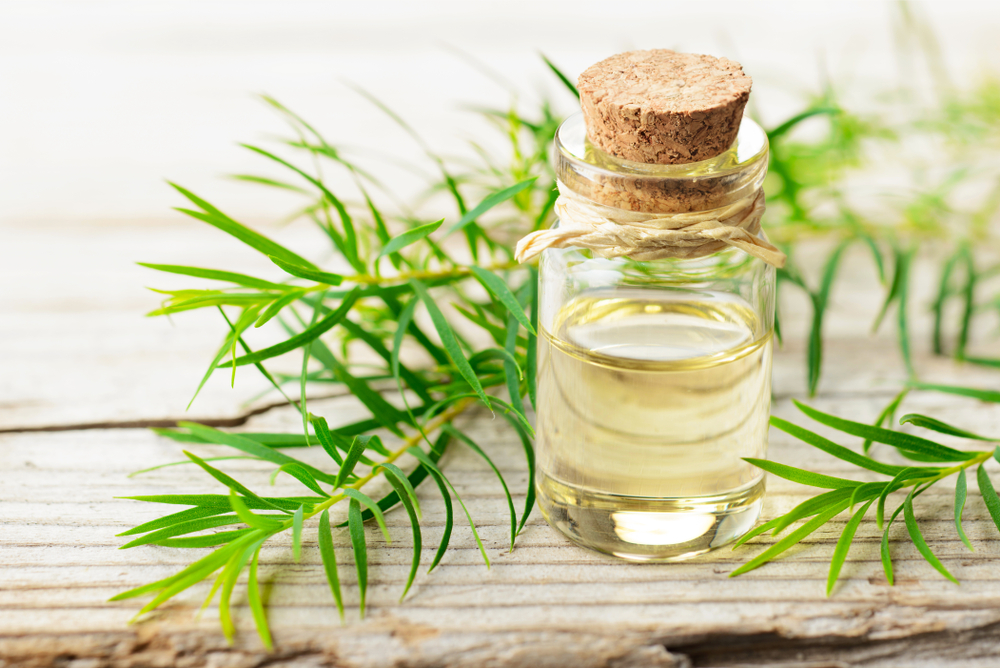
Statistics and scientific data do not support removing skin tags with tea tree oil, but some theories support the natural properties of tea tree oil being beneficial to skin tag removal.
Let us discuss the science behind using tea tree oil for skin tags removal:
- Dehydrating Effects of Tea Tree Oil
In medicine, dermatologists remove skin tags by encircling the tag's base with sutures. This stitch essentially cuts off the veins that supply blood and nutrients to it. A similar concept of dehydration using tea tree oil can be used for skin tag removal.
Tea tree dehydrates the skin tag and dries it up. This can help make the skin tag flaccid, shrink, and fall off (2).
- Antiviral Effects of Tea Tree Oil
Low-risk human papillomavirus (HPV) infections have also been linked to the development of skin tags, according to a study (5). If the cause of the skin tag is viral, then antivirals will be effective in skin tag removal.
Tea tree oil has powerful antiviral properties. The toxicity of tea tree oil prevents the penetration of the virus into the host cells (6).
- Antimicrobial Effects of Tea Tree Oil
The hydrocarbons and monoterpenes in tea tree oils are toxic to bacteria and germs. Tea tree oil's antibacterial qualities help to lessen the inflammation caused by toxins from bacteria. This is essential in warding off skin growths like acne, warts, or skin tags (2).
- Antifungal Effects of Tea Tree Oil
Tea tree oil is frequently used to cure nail fungus and athlete's foot. Additionally, it can be used to treat oral thrush and yeast infections caused by Candida species. This helps with other skin-related issues, like skin tags (2).
- Immunity-Boosting Properties of Tea Tree Oil
Tea tree oil keeps you overall healthy by boosting the white blood cells, which fight against all bacteria and viruses. A sound body will result in blemish-free, smooth, and glowing skin (7).
How to Use Tea Tree Oil on Skin Tags

Using tea tree oil for removal of skin tags is a home remedy and should be used precisely. Always consult a dermatologist before using tea tree oil treatment, for skin tags. Products in your kitchen or medicine cabinet may be used along with tea tree oil to reap the best benefits.
Let's examine how to get rid of skin tags at home:
Clean the skin tags and the skin around them with warm soapy water and pat the area dry before using the home remedies.
- Tea Tree Oil Massage
You can use a cotton ball or a gauze piece soaked in tea tree oil and place it on the skin tag. It is best if you secure it with tape and leave it overnight. This has to be done repeatedly over a period of time until the skin tag shrinks and falls off.
- Tea Tree Oil and a Carrier Oil
Tea tree oil is potent and may irritate normal to sensitive skin. It is best used with a carrier oil like coconut, olive, or jojoba oil. These oils are also known for their skin benefits. Mix 2 tablespoons of the carrier oil with 2-3 drops of tea tree oil and either massage the skin tag or keep a soaked patch on it overnight. This can also be used for 10 to 15 minutes, 2-3 times a day. Do it regularly until it is successful in skin tag removal (8).
- Tea Tree Oil and Salt Soak
2- 3 drops of tea tree oil, a half cup of clean water, and ½ teaspoon of sea salt can be mixed to form a concoction that can be regularly applied to the skin tag to enhance its dehydrating effects. Dab a cotton ball or a paper napkin soaked in the solution on the skin tags for 10-15 minutes, at least 2-3 times a day, for best results.
- Tea Tree Oil and Cider Vinegar
Apply 2-3 drops of tea tree oil to a cotton ball soaked in cider vinegar. Dab the cotton ball on the skin tag for about 10-15 minutes regularly to gradually remove skin tags. Since cider vinegar has high acidity, it will gradually dissolve the tissue surrounding the skin tag, removing it. Be very careful about this method since cider vinegar, like pure tea tree oil, can remove skin pigmentations and growths, but is also very potent and may cause skin burns (9).
Complications and Risks with Tea Tree Oil
Home remedies for skin tags frequently involve drying the tag until it shrinks and falls out. Thus, everyone availing of this treatment should be cautious about skin irritation and inflammation as potential side effects (2).
Here are a few ways you can be careful while using tea tree oil for skin tags:
- Purchase 100% pure tea tree oil without any preservatives or additives from a dermatologist-certified commercial brand.
- Do a patch test: Apply 2-3 drops of the tea tree oil to your upper arm. Massage the area. Observe the area for 24-48 hours for any signs of redness, rashes, or swelling.
- Do not allow your tea tree oil concoction to enter the eyes when removing the skin tags near your eyelids. In case of any contamination, make sure to rinse the eyes with copious amounts of water.
- Do not ingest tea tree oil. It is highly toxic when ingested. It can have severe adverse effects on ingestion, including disorientation and a lack of motor coordination.
Side Effects and Risks
Tea tree oil has highly active compounds that may irritate sensitive skin.
If you are allergic to tea tree oil, then on the application of it, you will notice the following signs either immediately or after a few hours:
- Itching
- Tingling
- Burning sensations
- Redness
- Rashes
- Swelling
- Dry, rough, and flaky skin
Skin tags should always be examined by a qualified healthcare professional before being treated, whether at home or in the clinic (2).
Conclusion
Tea tree oil for skin tags is a safe and efficient natural treatment. Its potent antiviral, antibacterial, and antifungal properties make it popular as a safe and non-invasive solution to skin tag woes. Whether you have one skin tag or several, tea tree oil can help you get smoother, clearer, and younger-looking skin.
Skin tags are harmless but may be a silent sign of other health concerns like obesity, diabetes, poor heart conditions, and PCOS. So never ignore skin tags and consult a physician as soon as you notice them. Skin tag removal can be done in multiple ways by the dermatologist. However, you may try available natural remedies as well.
Contributor: Dr. Yelena Deshko, ND, Board-certified naturopathic doctor and Founder of Lumèr - Timeless Health Clinic
References
1. Pandey A, Sonthalia S. Skin tags.
https://www.ncbi.nlm.nih.gov/books/NBK547724/
2. Carson CF, Hammer KA, Riley TV. Melaleuca alternifolia (Tea Tree) oil: a review of antimicrobial and other medicinal properties. Clin Microbiol Rev. 2006 Jan;19(1):50-62.
3. Tea tree oil. (2016).
https://www.nccih.nih.gov/health/tea-tree-oil
4. James R. How To Remove Skin Tags Safely. ORDER. 2023 Mar 8;11:00.
https://www.miamiherald.com/health-wellness/article272694975.html
5. Dianzani C, Calvieri S, Pierangeli A, Imperi M, Bucci M, Degener AM. The detection of human papillomavirus DNA in skin tags. British Journal of Dermatology. 1998 Apr 1;138(4):649-51.
https://academic.oup.com/bjd/article-abstract/138/4/649/6682978
6. Schnitzler P, Schön K, Reichling J. Antiviral activity of Australian tea tree oil and eucalyptus oil against herpes simplex virus in cell culture. Pharmazie. 2001 Apr;56(4):343-7
https://pubmed.ncbi.nlm.nih.gov/11338678/
7. Budhiraja SS, Cullum ME, Sioutis SS, Evangelista L, Habanova ST. Biological activity of Melaleuca alternifola (Tea Tree) oil component, terpinen-4-ol, in human myelocytic cell line HL-60. J Manipulative Physiol Ther. 1999 Sep;22(7):447-53.
https://pubmed.ncbi.nlm.nih.gov/10519561/
8. Lin TK, Zhong L, Santiago JL. Anti-inflammatory and skin barrier repair effects of topical application of some plant oils. International journal of molecular sciences. 2017 Dec 27;19(1):70.
https://www.mdpi.com/1422-0067/19/1/70
9. Feldstein S, Afshar M, Krakowski AC. Chemical Burn from Vinegar Following an Internet-based Protocol for Self-removal of Nevi. J Clin Aesthet Dermatol. 2015 Jun;8(6):50.





 JOIN OUR WHATSAPP CHANNEL
JOIN OUR WHATSAPP CHANNEL






































